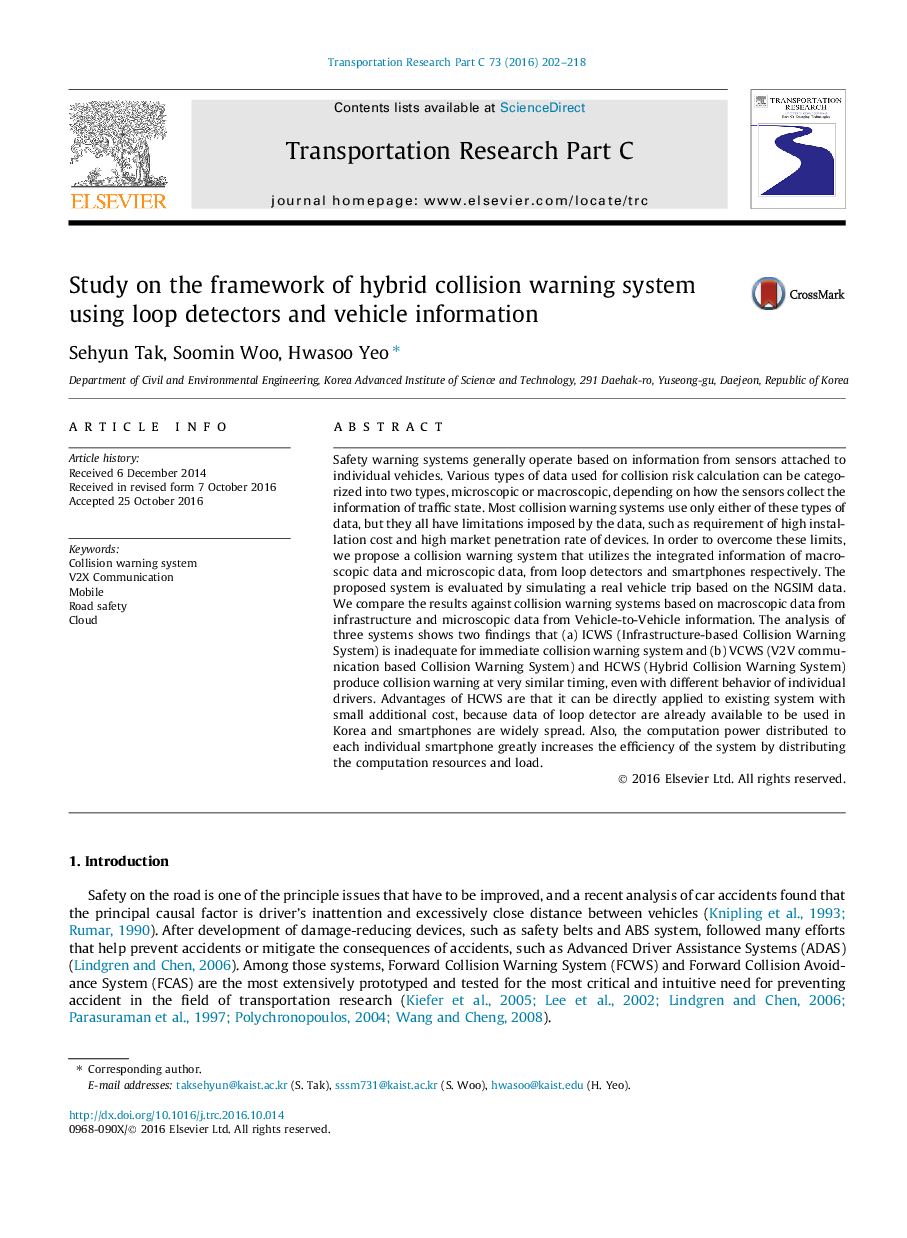| Article ID | Journal | Published Year | Pages | File Type |
|---|---|---|---|---|
| 4968611 | Transportation Research Part C: Emerging Technologies | 2016 | 17 Pages |
Abstract
Safety warning systems generally operate based on information from sensors attached to individual vehicles. Various types of data used for collision risk calculation can be categorized into two types, microscopic or macroscopic, depending on how the sensors collect the information of traffic state. Most collision warning systems use only either of these types of data, but they all have limitations imposed by the data, such as requirement of high installation cost and high market penetration rate of devices. In order to overcome these limits, we propose a collision warning system that utilizes the integrated information of macroscopic data and microscopic data, from loop detectors and smartphones respectively. The proposed system is evaluated by simulating a real vehicle trip based on the NGSIM data. We compare the results against collision warning systems based on macroscopic data from infrastructure and microscopic data from Vehicle-to-Vehicle information. The analysis of three systems shows two findings that (a) ICWS (Infrastructure-based Collision Warning System) is inadequate for immediate collision warning system and (b) VCWS (V2V communication based Collision Warning System) and HCWS (Hybrid Collision Warning System) produce collision warning at very similar timing, even with different behavior of individual drivers. Advantages of HCWS are that it can be directly applied to existing system with small additional cost, because data of loop detector are already available to be used in Korea and smartphones are widely spread. Also, the computation power distributed to each individual smartphone greatly increases the efficiency of the system by distributing the computation resources and load.
Keywords
Related Topics
Physical Sciences and Engineering
Computer Science
Computer Science Applications
Authors
Sehyun Tak, Soomin Woo, Hwasoo Yeo,
